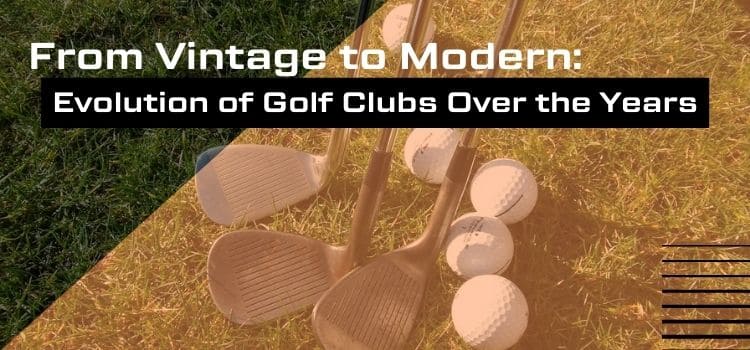
Evolution of Golf Clubs Over the Years
Setting the Standard of Adaptability: How Golf Clubs Advanced the Game for All Golfers
It’s officially October which means that the weather has begun changing as many of you may have noticed while on the course. If you’re an avid golfer, you may have realized that golf is a sport centered around change and adaptability. As a golfer, we are forced to adapt to the challenges that we are faced with– both mentally and physically– while playing a round or engaging in practice. Not only have golfers learned to become adaptable but the instruments that are used have certainly changed since the creation of the sport.
Golf, a sport often associated with tradition and heritage, has seen significant technological advancements in its equipment over the years. If you’re a golfer, you most likely know that one of the most vital aspects of a golfer's gear is golf clubs. The evolution of golf clubs is a fascinating journey that spans centuries, from simple, handmade instruments to today's high-tech, precision-engineered clubs. In this blog post, we'll delve into the rich history and evolution of golf clubs, highlighting key innovations and milestones along the way.

The Origin of Golf Clubs
Golf can be traced back to Scotland, dating back to the 15th century. During the early days of the sport, golfers used clubs made of wood, often with heads crafted from dense, hardwood. These clubs were rough, asymmetrical, and entirely handcrafted. Golfers relied on skilled craftsmanship to produce clubs that suited their playing style.
● The Putter:
● The Feathery:

Modernizing Golf Clubs
As the sport gained popularity, golfers transitioned into a more modern version of earlier developed golf tools. In particular, the 19th century marked a significant turning point in golf club evolution. As the sport became more known, it became more organized which caused golfers and clubmakers to begin experimenting with new designs and materials.
● The Hickory Shaft:
● Iron Clubs:
● The Birth of Steel:

The Modernized Golf Club: Implementing High-Tech
The late 20th and early 21st centuries have witnessed a technological revolution in golf club design and manufacturing. With new materials and manufacturing mechanisms, golf clubs experienced a rapid amount of change in order to deliver a wide selection range. Golf clubs today are engineered with precision and built using advanced materials and techniques.
● Perimeter Weighting:
● Graphite Shafts:
● Adjustable Golf Clubs:
● Hybrid Clubs:
● Computer-Aided Design:
As Golf Evolves, Golf Clubs Change Adapt to It
The evolution of golf clubs is a testament to innovation and the desire to improve performance in this sport. From the early beginnings of handcrafted wooden clubs to today's high-tech, precision-engineered tools, golf clubs have come a long way from where they began.
As golf continues to evolve, we can only imagine what the future holds for club design and technology. Whether you prefer the classic elegance of vintage clubs or the cutting-edge technology of modern ones, the game of golf offers a rich tapestry of history, innovation, and, most importantly, enjoyment for golfers of all generations. I encourage each of our readers to use adaptability and change where it works best for you– whether that be on the course or while selecting a new golf club.
https://www.historic-uk.com/HistoryUK/HistoryofScotland/The-History-of-Golf/
https://www.golf-club-revue.com/golf-club-history
